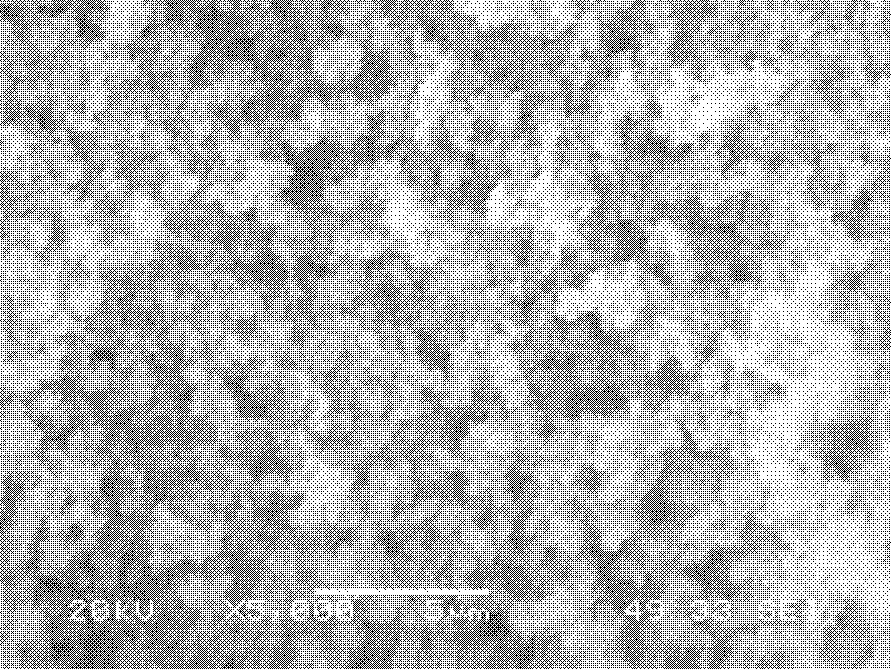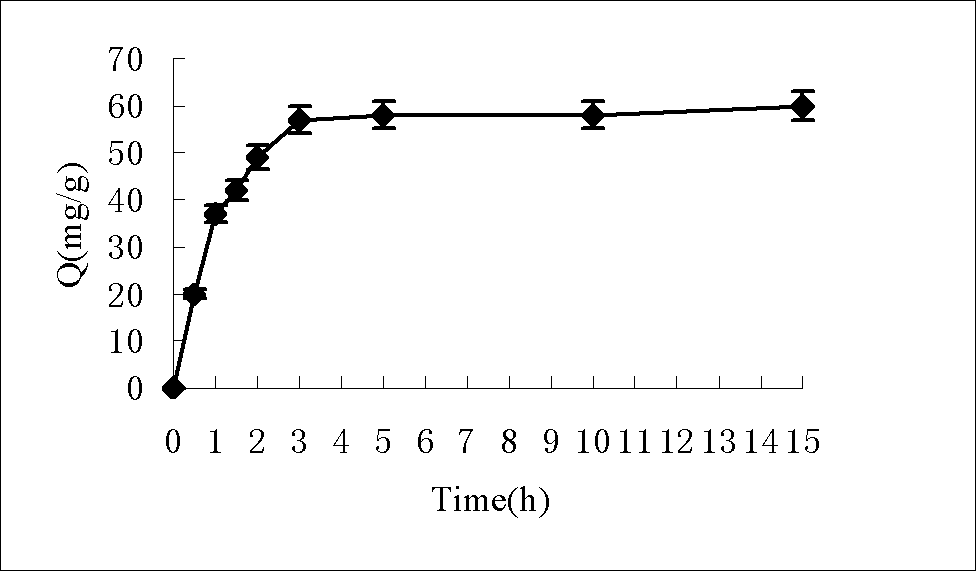Preparation method of epothilone B molecularly imprinted polymer
A technology of epothilone and molecular imprinting, which is applied in a preparation field in the field of biochemical engineering technology, can solve the problems of high cost of separation and purification, difficulty in increasing epothilone production, and high production cost of epothilone, and achieves Increase specific adsorption, improve specific selective adsorption capacity, and reduce production costs
- Summary
- Abstract
- Description
- Claims
- Application Information
AI Technical Summary
Problems solved by technology
Method used
Image
Examples
Embodiment 1
[0020] Mix 1.0 mmol of template molecule epothilone B; 4 mmol of functional monomer methacrylic acid, 20 mmol of crosslinking agent ethylene glycol dimethacrylate and 5 ml of solvent acetonitrile:methanol (4:1 (v / v)), After standing at room temperature for 1 hour, 10 mg of initiator azobisisobutyronitrile was added. After charging, degassed by ultrasonic vibration for 10 minutes, followed by blowing nitrogen to remove oxygen for 30 minutes, sealed the tube under the condition of blowing nitrogen, polymerized in a 45°C water bath for 12 hours, and then polymerized in a 60°C water bath for 12 hours to obtain a block polymer.
[0021] After the reaction is finished, the obtained epothilone B molecularly imprinted polymer is crushed, ground and sieved. The acetone was settled three times, and freeze-dried to obtain polymer particles with a particle size of 40-60 μm.
[0022] The above-mentioned 40-60 μm polymer particles were extracted by Soxhlet extractor for 72 hours to remove ...
Embodiment 2
[0025] 1.0mmol of template molecule epothilone B; 4mmol of functional monomer methacrylic acid, 20mmol of crosslinking agent ethylene glycol dimethacrylate and 4ml of solvent acetonitrile:methanol (4:1 (v / v)) were mixed evenly, After standing at room temperature for 1 hour, 10 mg of initiator azobisisobutyronitrile was added. After charging, degassed by ultrasonic vibration for 10 minutes, followed by blowing nitrogen to remove oxygen for 30 minutes, sealed the tube under the condition of blowing nitrogen, polymerized in a 45°C water bath for 12 hours, and then polymerized in a 60°C water bath for 12 hours to obtain a block polymer.
[0026] After the reaction is finished, the obtained epothilone B molecularly imprinted polymer is crushed, ground and sieved. The acetone was settled three times, and freeze-dried to obtain polymer particles with a particle size of 40-60 μm.
[0027] The above-mentioned 40-60 μm polymer particles were extracted by Soxhlet extractor for 72 hours ...
Embodiment 3
[0030] 0.5mmol of template molecule epothilone B; 2mmol of functional monomer methacrylic acid, 10mmol of crosslinking agent ethylene glycol dimethacrylate and 3ml of solvent acetonitrile:methanol (4:1 (v / v)) were mixed evenly, After standing at room temperature for 1 hour, 5.0 mg of initiator azobisisobutyronitrile was added. After charging, degassed by ultrasonic vibration for 5 minutes, followed by blowing nitrogen to remove oxygen for 20 minutes, sealed the tube under the condition of blowing nitrogen, polymerized in a water bath at 45°C for 12 hours, and then polymerized in a water bath at 60°C for 12 hours to obtain a block polymer.
[0031] After the reaction is finished, the obtained epothilone B molecularly imprinted polymer is crushed, ground and sieved. The acetone was settled three times, and freeze-dried to obtain polymer particles with a particle size of 40-60 μm.
[0032] The above-mentioned 40-60 μm polymer particles were extracted by Soxhlet extractor for 48 ...
PUM
| Property | Measurement | Unit |
|---|---|---|
| Particle size | aaaaa | aaaaa |
Abstract
Description
Claims
Application Information
 Login to View More
Login to View More - R&D
- Intellectual Property
- Life Sciences
- Materials
- Tech Scout
- Unparalleled Data Quality
- Higher Quality Content
- 60% Fewer Hallucinations
Browse by: Latest US Patents, China's latest patents, Technical Efficacy Thesaurus, Application Domain, Technology Topic, Popular Technical Reports.
© 2025 PatSnap. All rights reserved.Legal|Privacy policy|Modern Slavery Act Transparency Statement|Sitemap|About US| Contact US: help@patsnap.com


